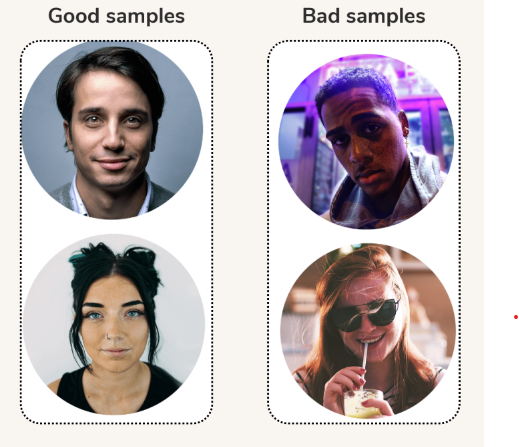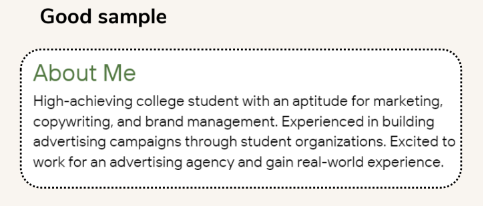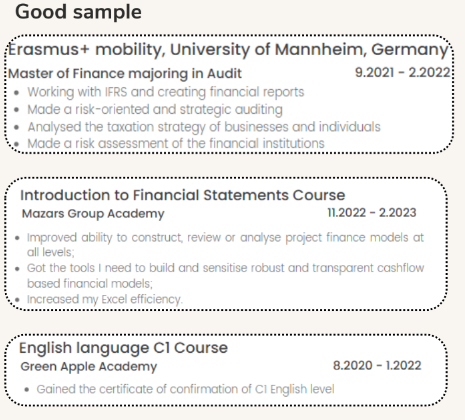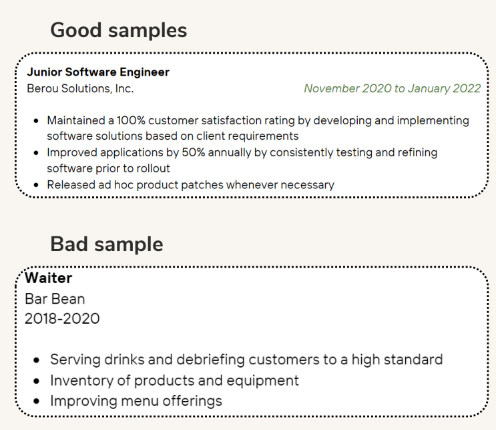Creating a CV To Get Your Dream Internship or a Job

Landing your dream internship or job begins with crafting a CV that not only represents your skills and experience but also catches the attention of potential employers. In this guide, we’ll walk you through six essential elements to turn your CV into a more efficient and attractive document for future employers.
1. Visual Appearance
The first thing employers notice is the visual layout of your CV. A clean, professional design is key to making a strong first impression. Here are some tips to ensure your CV stands out for the right reasons:
Structure and length: Keep your CV concise—ideally, one page long. Focus on quality, not quantity.
Format: Use PDF format to preserve the design and ensure readability across devices.
Headings and bullet points: Make information easy to scan by using clear headings and bullet points to emphasize key details.
Visual differentiation: Keep in mind the role you’re applying for. Creative roles (like designers or art directors) allow for more visually creative designs, while white-collar roles (such as law or banking) require a more traditional, formal layout.
Photo: Including a professional photo can add a personal touch and leave a positive impression, especially if the position involves communication with clients or partners.
2. General Information
Your CV should start with general information, providing a snapshot of who you are and what you're looking for. This section typically includes:
Full name: Use the same name you go by professionally.
Contact details: Ensure your phone number and email address are up-to-date and professional (e.g., anna.vnova@mail.com rather than kitty19@mail.com).
Location: Indicate where you’re based, but no need to include your full address.
LinkedIn profile: If your LinkedIn is up-to-date, include the link.
3. Professional Summary
The professional summary gives the employer a quick insight into your professional identity and motivations. Keep it brief, around 2-4 sentences, and avoid too much personal detail. Focus on:
Your relevant professional background.
Your key skills or experiences that make you a good fit for the job.
Your career aspirations, especially in relation to the role you're applying for.

4. Education
Your education section should be organized logically, listing your most recent educational achievements first. Here’s how to structure it:

List in reverse chronological order: Start with your most recent degree, including the degree type, major, and the name of the institution.
Relevant subjects: Highlight subjects that align with the job you're applying for. For example, if you're applying for a finance position, mention courses such as Banking or Corporate Finance.
Study abroad: If you've studied abroad, mention the location and any important skills you gained, such as adaptability or language proficiency.
Self-improvement: If you've attended any relevant courses, workshops, or conferences, mention them with a brief explanation of what you learned.
5. Work Experience
Your work experience is one of the most critical sections of your CV, and it should clearly show your relevance to the job you're applying for. List your positions in reverse chronological order and include:
Job title: Clearly state the role you held.
Company name and dates: Indicate where and when you worked.
Responsibilities and accomplishments: Provide a brief description of your main responsibilities and highlight key achievements or skills developed in each role.
Relevance to the job: Tailor your descriptions to highlight experiences that are most relevant to the position you’re applying for.

6. Skills
This section should list both hard and soft skills that are relevant to the job. Hard skills are specific to your field, while soft skills demonstrate your ability to work well with others and adapt to different environments.
Hard skills: These may include software proficiency, programming languages, or industry-specific tools. For example, for a digital marketing role, skills like Google Analytics, SEO, or Photoshop would be relevant.
Soft skills: Examples include communication, problem-solving, and teamwork. Always be prepared to back up your soft skills with real-life examples.
Additional Sections
Position Relevance
Clearly state the position you're applying for at the top of your CV, such as "Marketing Coordinator" or "Junior Software Developer." Adapt your CV for each specific role to maximize its relevance by focusing on experiences, skills, and qualifications that align with the job description.
Additional Information
If relevant, add the following sections at the end of your CV to provide a fuller picture of your qualifications and experiences:
Certifications: Include any relevant certifications, such as Google Ads Certification for a marketing role or Certified Public Accountant (CPA) for an accounting position.
Awards: Highlight any professional or academic awards you’ve received.
Volunteer work: If you’ve been involved in volunteering activities, mention them, especially if they relate to the role.
Publications: Include any articles, papers, or projects you’ve published, if applicable.
Hobbies: Sharing a hobby that aligns with the job or demonstrates useful skills (e.g., photography, coding, or public speaking) can give employers insight into your personality before the interview.
Final Touches
Proofread your CV: Typos and grammatical mistakes can hurt your chances of landing a job. Ask a friend to proofread your CV or use tools like Grammarly or Deepl to check for errors.
Tailor it for each application: Adjust your CV slightly for each role you apply for by highlighting the most relevant experience and skills.
Don’t overdo personal details: Keep the focus on your professional experience and qualifications, not on your personal life.
Creating a CV that grabs attention is the first step to unlocking your potential and securing your dream internship or job. By following these steps—focusing on clear structure, relevance to the position, and highlighting your skills—you’ll be well on your way to standing out to employers and taking the next step in your career!
Watch our video-guide for more info!



